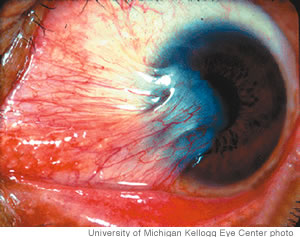The Importance Of Eye Protection

Friday - January 06, 2010
| Share
 Del.icio.us
Del.icio.us
|
I recently met a woman with a pterygium on her left eye. I never heard of this condition before, so I looked more closely and it basically looked like part of her eyeball was missing.
“Pterygia is a tissue which grows over the front of your eye,” explains Dr. Hugo Higa, an ophthalmologist and founder of Aesthetic Vision Center. “It’s your body responding to irritation and it’s permanent, so it doesn’t go away once you have it. It usually starts as a small growth out on the inner cornea of the eye but can enlarge over time.”
The girl I met said that her pterygia didn’t affect her vision, but that she must always wear polarized sunglasses when she’s outdoors. She believes she got this eye problem from running, which she started doing about three years ago.
In most cases, people with a pterygium can still see fine. But sometimes the pterygia can grow over the eye distorting vision. In some cases it can even grow over the center of your eye and block your vision. If vision is threatened, the pterygia should be surgically removed.
According to Higa, pterygia are commonly found in athletes or people who are chronically exposed to sunny, dry and/or windy conditions. Ways to prevent pterygia include limiting your time in the sun, wearing sunglasses with UV protection and a hat, and keeping your eyes moist with artificial tears.
In addition to pterygium, UV rays from the sun can cause skin cancer of the eyelids and have been suggested as a cause of cataracts - clouding of the eye lens that leads to blurred vision.
Also, wearing sunglasses can decrease your risk of eye injuries by blocking objects from flying into your eye.
“It’s really a matter of prevention,” says Higa. “Accidental eye injuries are one of the leading causes of visual impairment in children and younger adults.”
Higa says other common eye injuries are related to sports, home improvement or work activities: “a blow to the face or a ball thrown to the face,” he notes as examples, “also, working with power tools and lawn-mowers, cutting branches or anything to do with home repairs. At home, scratches on the eye (cornea abrasion) either from a foreign body or, in the case of mothers, from a baby’s fingernail are injuries which are commonly seen in my office.”
“Your eye has an outer layer that protects it which, when you scratch it, increases the chance of an infection. You’ll know if it’s scratched because it’ll hurt, be watery and sensitive to the light. It can heal pretty quickly, but it’s very important to have it looked at just to make sure it doesn’t get infected.”
I’m outdoors a lot and admit that I almost never wear sunglasses. I do own a pair, I just always forget to put them on.
So one of my many New Year’s resolutions this year is to take better care of my health, including my eyes. And besides, wearing shades is cool.
E-mail this story | Print this page | Comments (0) | Archive | RSS Comments (0) |
Most Recent Comment(s):













